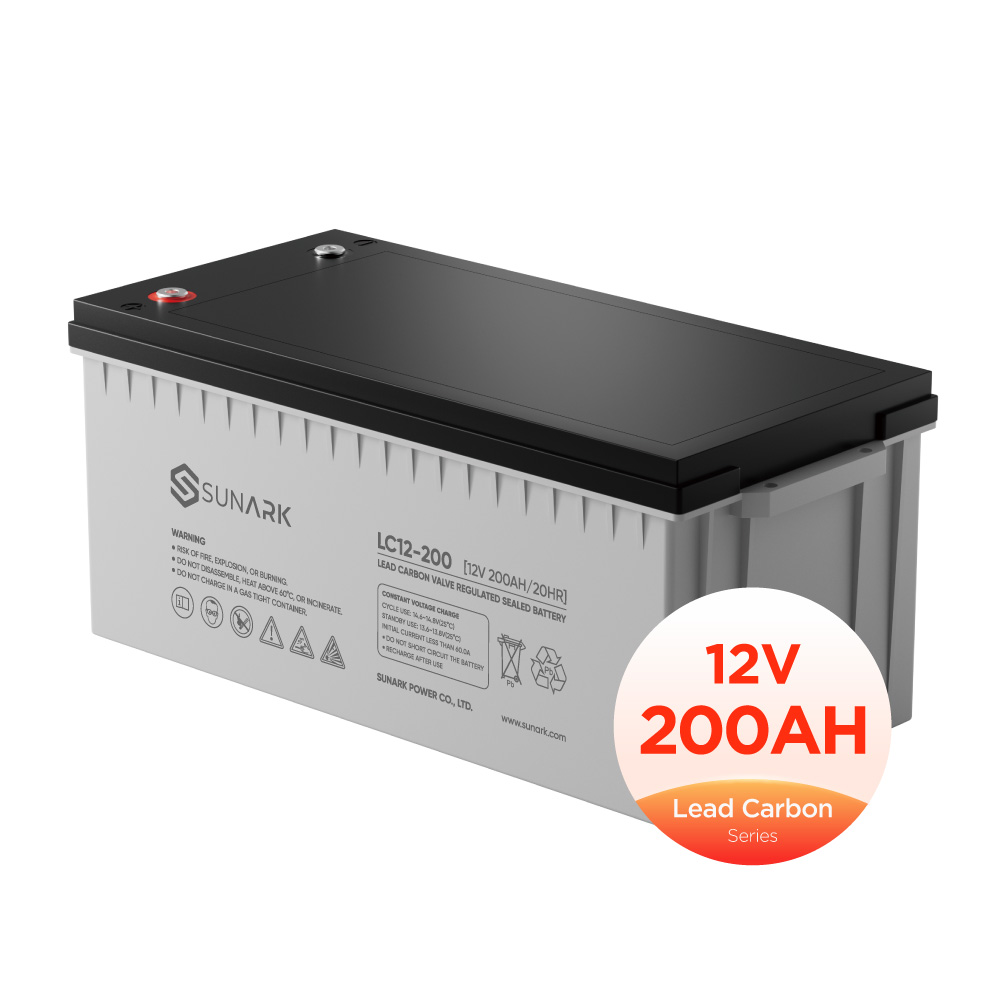Brand:
SunArkCells Per Unit:
6Voltage Per Unit:
12VDesign Life:
20 years (Float charging)Standby Use Voltage:
13.6V~13.8V @25°CCycle Use Voltage:
14.2V~14.4V @25°COperating Temperature Range:
Discharge: -15°C~50°C Charge: 0°C~40°C Storage: -15°C~50°CNormal Operating Temperature Range:
25°C ± 5°CSelf Discharge:
Monthly Self-discharge ratio is less than 3.5% at 25°C.Container Material:
A.B.S. UL94-HB UL94-V0 Optional
What is Lead Carbon battery?

Lead-carbon Technology Battery
Lead-carbon batteries are made by mixing high specific surface carbon materials (such as activated carbon, activated carbon fiber, carbon aerogel or carbon nanotubes, etc.)
Dispersion, improve the utilization rate of lead active materials, and can inhibit the growth of lead sulfate crystals. The principle is similar to that of a super battery, which is another type of super battery. Adding carbon materials to the negative plate takes advantage of the instantaneous large-capacity charging of the supercapacitor, and acts as a buffer during high-rate charge/discharge, effectively protecting the negative plate and inhibiting the "sulfation" phenomenon.Lead-carbon battery is a mixture of asymmetric supercapacitor and lead-acid battery in parallel connection. As a new type of super battery, lead-carbon battery is the fusion of lead-acid battery and supercapacitor technology. A dual-function energy storage battery having both capacitive and battery properties. Therefore, it not only takes advantage of the advantages of supercapacitor instantaneous power large-capacity charging, but also takes advantage of the energy advantages of lead-acid batteries, and can be fully charged in one hour. Has very good charge and discharge performance.

Lead Carbon Battery Applications:
Due to the use of lead-carbon technology, the performance of lead-carbon batteries is far superior to traditional lead-acid batteries, and can be used in new energy vehicles, such as: hybrid vehicles, electric bicycles, etc.; it can also be used in the field of new energy storage, Such as wind power generation and energy storage. Lead-carbon batteries have a low price advantage similar to traditional lead-acid batteries and a mature industrial manufacturing base, and have strong competitive advantages in various application fields.
This hybrid technology is able to quickly export and import charge during vehicle acceleration and braking, and is especially suitable for the "stop-start" system of micro-hybrid vehicles. Lead-carbon batteries can improve the power of the original lead-acid batteries and prolong their service life